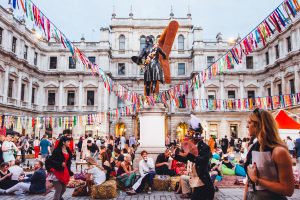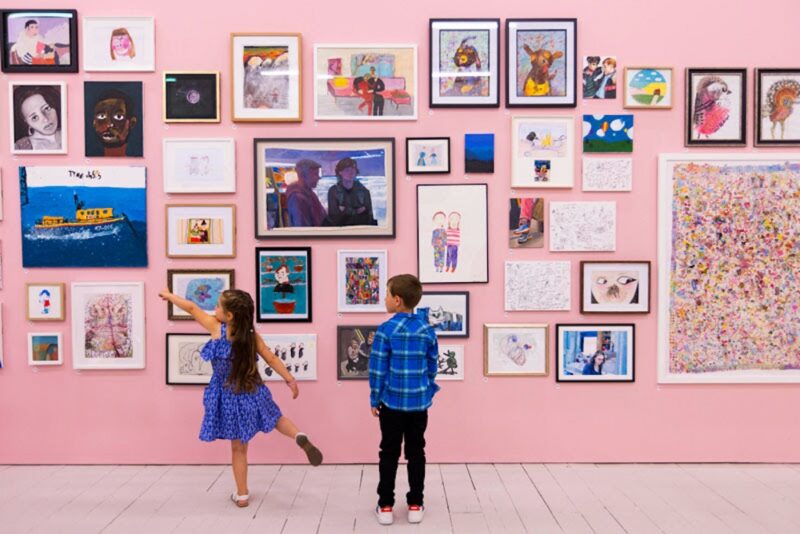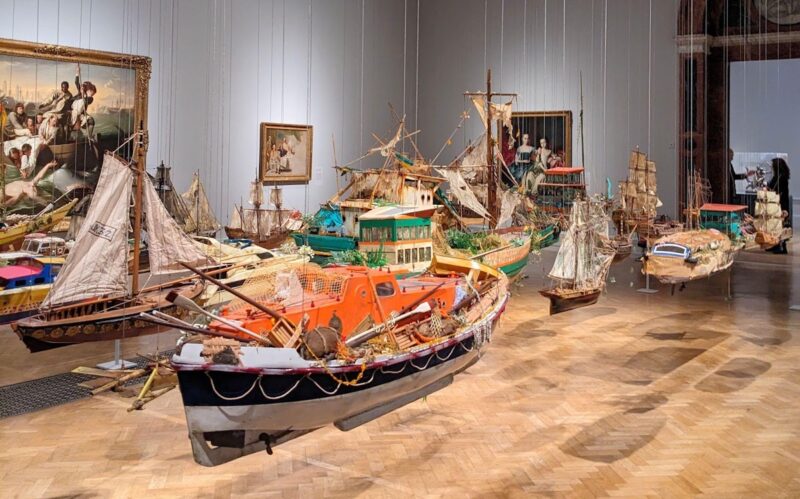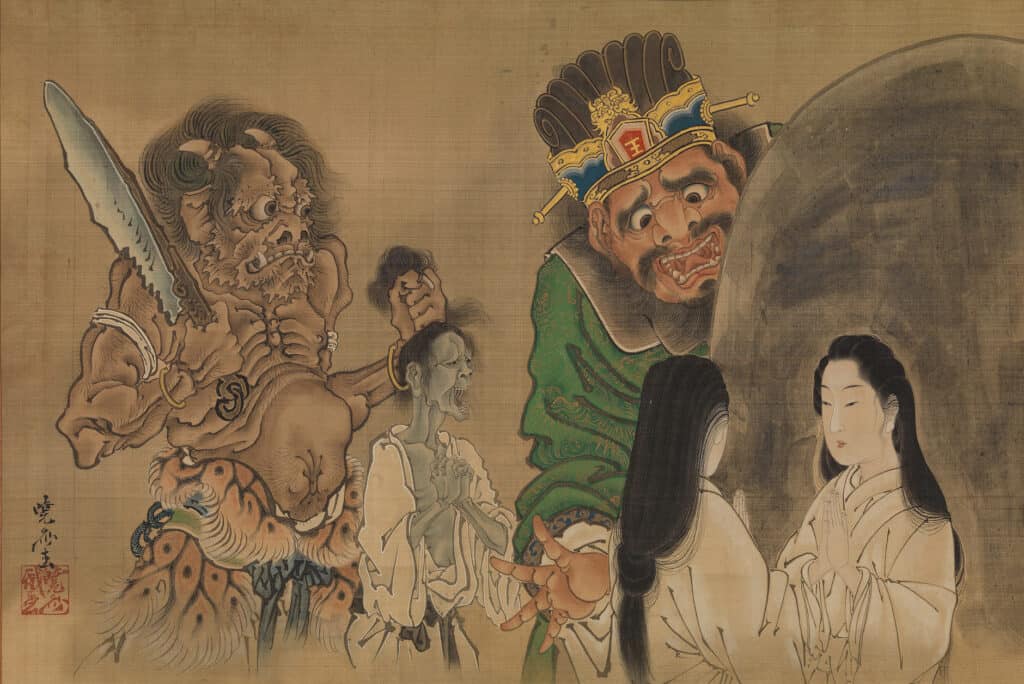
Kawanabe Kyosai (1831–1889) was the most exciting and popular Japanese painter of the late 19th century. A child prodigy and draughtsman of the highest ability, his art is humorous, provocative, energetic, and outrageous. The exhibition will focus largely on the art of sekiga, ‘spontaneous paintings’, produced at ‘calligraphy and painting parties’ (shogakai) which were often fuelled by prodigious amounts of saké. Overlooked for decades, many of these works reveal a comical twist which plays on conventions or reflects the artist’s take on society. Alongside these spontaneous works, highly detailed studio paintings will reveal the wide subject range Kyosai referenced as well as his revolutionary style which challenged the rigid artistic conventions of the day. The historical context of his work will be explored, revealing the great political, social, and cultural changes taking place across Japan which he captured in his art. The exhibition will include around 80 works, many of which have never been exhibited or published, and these will all be drawn from the unparalleled collection of Israel Goldman. This will be the first monographic exhibition of Kyosai’s work in the UK since 1993.
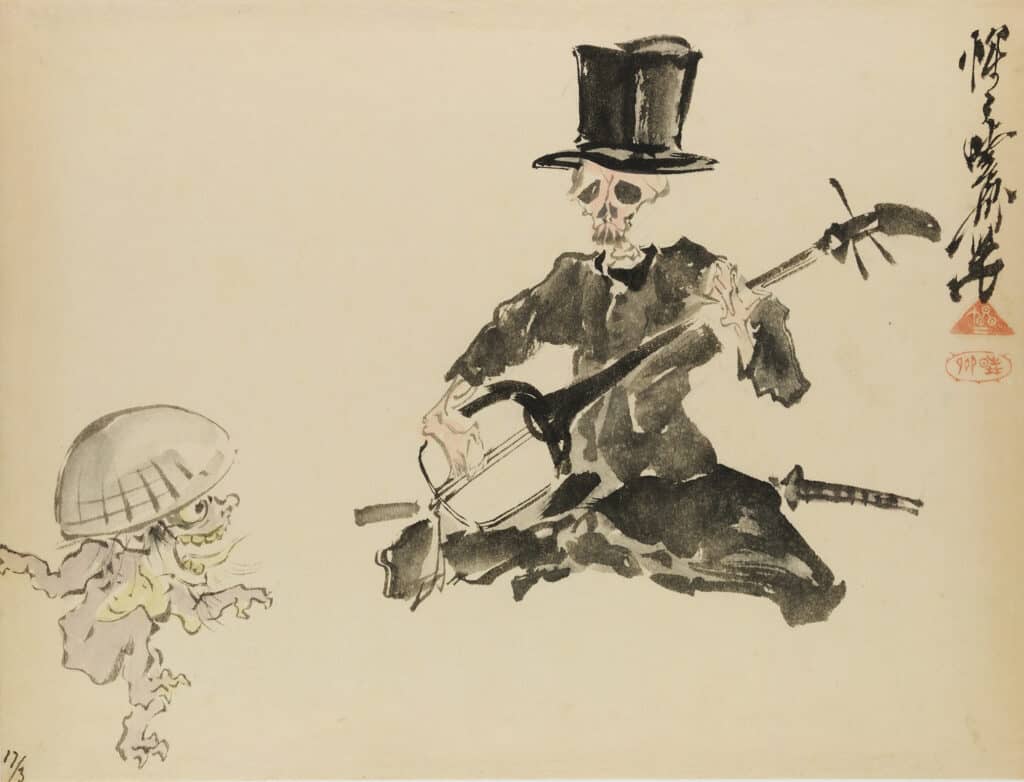
Kyosai was initially a pupil of the ukiyo-e artist Utagawa Kuniyoshi (1798-1861) before receiving academic training at the celebrated Kano school. He had a keen engagement with the world around him and an inexhaustible curiosity; he did not hesitate to incorporate new elements into his traditional studies. More recently he has been an important source for modern manga, tattoo artists and contemporary painters. As one of the most famous artists of his day, written records regarding Kyosai are also abundant. There are contemporary accounts of his interactions with the first generation of Western artists, writers and diplomats to visit Japan after the country opened its ports to the West in 1854. They include the British architect, Josiah Conder, and the founder of the musée Guimet, French industrialist Émile Guimet. Kyosai also published a self-illustrated, semi-autobiography, Kyosai gadan, in 1887.
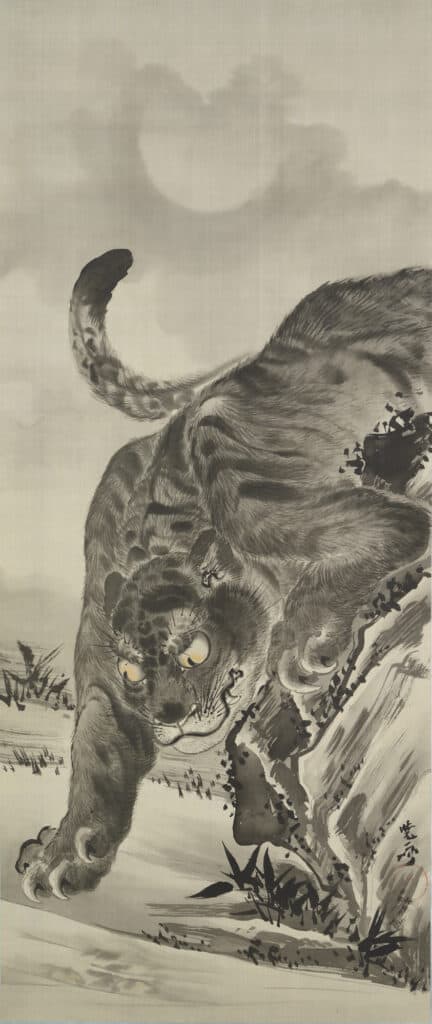
The exhibition will explore three themes. The first section, From Tradition to Innovation, will highlight Kyosai’s representative works which demonstrate the variety of genres and styles in which he painted. These works, which include finely finished examples in full colour, reveal Kyosai’s firm foundation as a trained academic painter and provide a distinct contrast to the spontaneous paintings. Thanks to his extensive mastery of the traditional practices, these works are painted with considerable freedom and invention. A highlight here will be one of the most important works in the exhibition, a unique pair of 3-metre folding screens, Night procession of one hundred demons, 1871 – 1889.
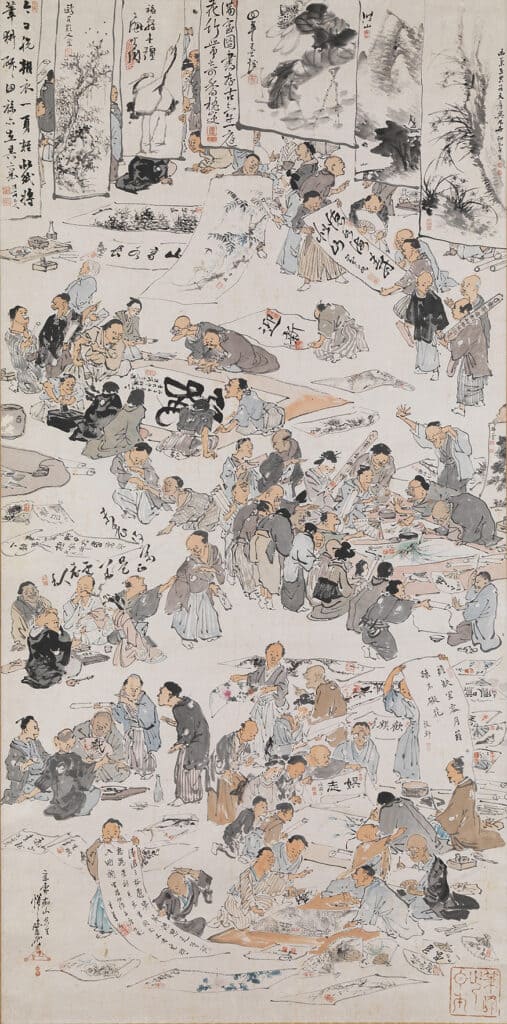
The second section Laughing at Modernity will introduce Kyosai within the historical setting of mid to late 19th century Japan. Prints and paintings depict the introduction of Western culture to Japan, encounters with Europeans and Americans, domestic political events and civil wars. In these pieces, contemporary topics are treated with humour, with human figures or ‘humanised’ animals often created in order to overcome strict political censorship.
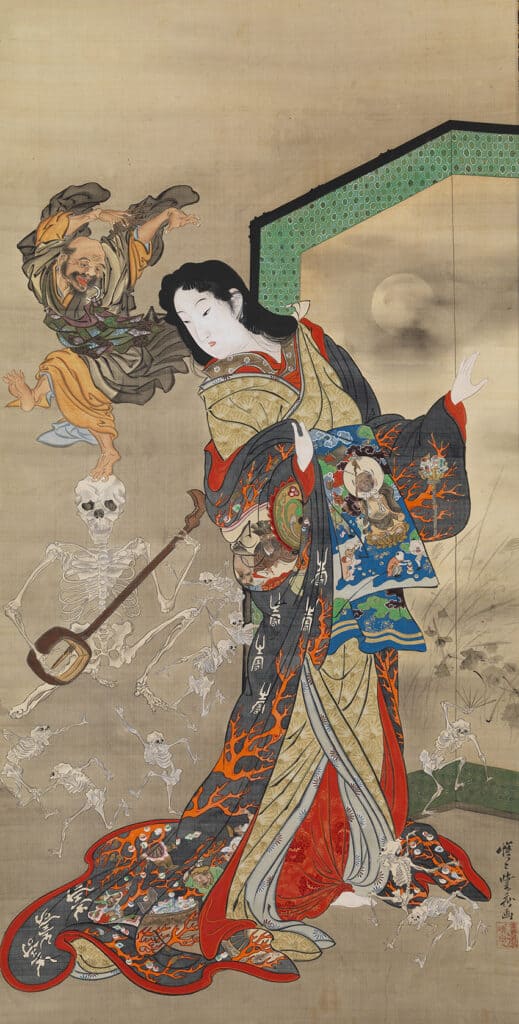
The final section, The Artist meets his Public, will focus on spontaneous paintings and collaborative works. Collaboration often occurred at gatherings and it was a vital part of art-making in 19th century Japan. Some of the spontaneously painted compositions are ‘drunken paintings’, which reveal the essence of Ky?sai’s virtuosity as a painter with their wilder and freer brush strokes. Kyosai also painted comical shunga (sexually explicit images), often impromptu in front of an audience. Additional, related works will be exhibited in the genre of ‘paintings within paintings,’ one of Ky?sai’s recurring themes.
Kyosai: The Israel Goldman Collection The Gabrielle Jungels-Winkler Galleries 19th March – 19th June 2022 at Royal Academy of Arts royalacademy.org.uk

The exhibition is organised by the Royal Academy of Arts, London. It is curated by Dr Sadamura Koto, Robert and Lisa Sainsbury Fellow, Sainsbury Institute for the Study of Japanese Arts and Cultures and Visiting Researcher in the Asia Department at the British Museum, and Israel Goldman, in conjunction with Dr Adrian Locke, Chief Curator, Royal Academy of Arts.


